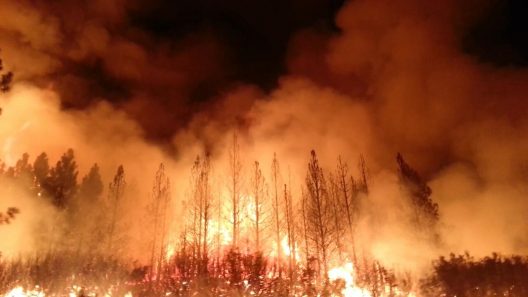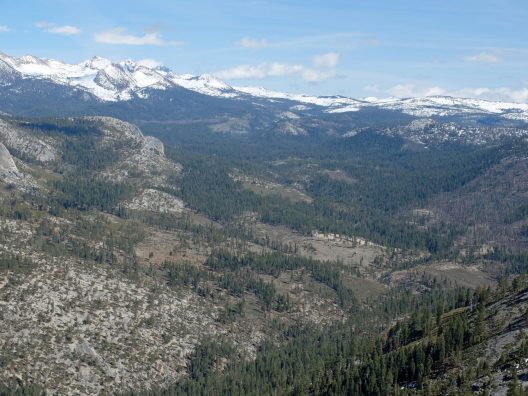SEFS-led study shows how California’s largest wildfires have complex effects on forests – and present an opportunity for forest management
Recent large wildfires in California’s northern and Sierra Nevada forests have been well publicized in the media for their record-shattering sizes. But despite the attention they receive, their ecological impacts are not well understood. Recent work has shown that they can have a Dr. Jekyll and Mr. Hyde split personality – they can be both very destructive and beneficial at the same time.
A recent SEFS-led study analyzed nearly 40 years of California fire history to examine how large wildfires have shaped forests in recent decades. These large fires have played an outsized role in shaping forests, and contain both desirable and undesirable ecological effects, the study found. The research will be published in an upcoming issue of the journal Forest Ecology and Management.
“There have been over 1,800 forest fires in California since 1985, but just 18 of these were responsible for nearly half of the total area burned by wildfire,” said Gina Cova, lead author of the study and Ph.D. student at SEFS. “Historically, numerous smaller fires that burned under more favorable weather played an important role in maintaining the resilience of forests across the Sierra Nevada and northern California. Our results show that this role has shifted dramatically to just a handful of large fires, which fundamentally have a different impact on forests.”
Impact of recent fires
Because large fires often burn under extreme, wind-driven conditions, they contain large patches of severe fire effects where all, or most, trees are killed by fire and post-fire forest recovery may fail, the study found. These large, high-severity patches – and the rate at which they have increased over the past several years – have no historic precedent. The study also found that 18 large wildfires produced nearly 60% of the high-severity fire area burned by all fires since 1985.
While the study found that large wildfires have an outsized contribution to the negative ecological effects of fire in California forests, they also found that these same wildfires contain large areas of ‘good fire.’ In these patches, fires burned at lower intensities to thin trees and reduce fuels in dense forests, which can help moderate the severity of subsequent wildfires. Amid large areas of severe fire, these patches of more moderate severity present an opportunity for forest management.
Potential increase of forest resilience
According to Malcolm North, research ecologist with the US Forest Service Pacific Southwest Research Station and co-author of the study, this paper quantifies how high-severity fire is unraveling the fine-scale fabric of these forests, a fabric that supports ecosystem services such as biodiversity, carbon storage, and water quantity and quality. However, when large fires burn at lower intensity, they can restore forests, which is a benefit that forest managers could leverage to increase forest resilience to changing fire and climate conditions.
Importance of the study
Dr. Van R. Kane, SEFS Research Assistant Professor and co-author of the study, emphasized that this work shows how essential it is to assess the cumulative effects of wildfires together rather than examining individual fires separately.
“Without this approach, we would have missed the dramatic change in the fire regime and that even the largest fires are also likely improving forest health across parts of their extents along with the destructive burns elsewhere within their perimeters,” said Kane.
Study co-authors
- Gina Cova, SEFS PhD student and lead author
- Van R. Kane, SEFS Research Assistant Professor
- Susan Prichard, SEFS Research Scientist
- Alina Cansler, SEFS Research Scientist
- Malcolm North, research ecologist at US Forest Service Pacific Southwest Research Station
For more information about this study, contact Gina Cova at cova@uw.edu.

